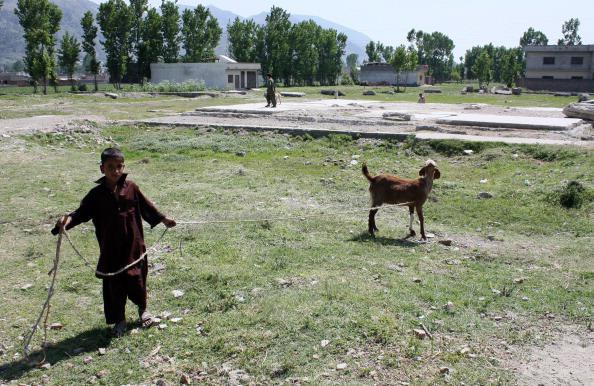The question of whether torture helped the United States locate Osama Bin Laden has been debated since almost immediately after the news broke on May 2, 2011 that the al-Qaida leader had been killed, especially after the hit 2012 film Zero Dark Thirty portrayed “enhanced interrogation” as the first step in finding Bin Laden’s Pakistan hideout. The Senate torture report released today addresses the issue specifically, arguing at length that the CIA’s past statements on the question have been misleading and that the “vast majority” of the information used to find Bin Laden was not obtained through torture.
The issue of Bin Laden and torture has always resolved around a courier named Abu Ahmed al-Kuwaiti, who was tracked to the terrorist leader’s compound in Abbotabad, Pakistan after being identified as an important al-Qaida operative. Defenders of the torture program, including Dick Cheney, have said al-Kuwaiti’s identity was obtained through “enhanced interrogation,” specifically of Khalid Sheikh Mohammed, while Zero Dark Thirty portrays a number of detainees who have been tortured providing information about al-Kuwaiti. Former CIA director Leon Panetta, though he has tended to avoid sweeping public statements about the value of torture, told Senators at a May 4, 2011 briefing that “the tipoff” about the importance of Bin Laden’s couriers came from detainees who had been waterboarded. And a document prepared by the CIA shortly after Bin Laden’s death noted that nine of the detainees who provided “Tier 1” intelligence about al-Kuwaiti had been subject to enhanced interrogation.
The Senate report, however, documents evidence that the CIA was aware of al-Kuwaiti’s existence well before Khalid Sheikh Mohammed’s capture in March 2003, and that information on al-Kuwaiti’s cell phone activity, email correspondence, and relationships with other terror suspects was being collected by the agency via standard intelligence-gathering techniques before any of its detainees mentioned his name. The report says that none of the three CIA detainees known to have been waterboarded provided truthful information about al-Kuwaiti. And it states that, of those nine detainees who were tortured and gave the CIA “Tier 1” information about the courier, five actually provided that information before being tortured—and that the other four provided information that was either believed to be false or speculative. (It is worth noting that the CIA believed even at the time that some of the tortured suspects who denied or gave bad info about al-Kuwaiti were lying to cover up his importance.) The “most accurate” information about al-Kuwaiti and Bin Laden, the report indicates—about the courier’s role in al-Qaida, his relationship to Bin Laden, and the circumstances in which Bin Laden was likely living—came from a detainee named Hassan Ghul who gave the CIA the information before he was tortured in 2004.
In all, the Senate’s account jibes with earlier reports about Bin Laden’s capture written by observers critical of the idea that torture was essential to the operation. While it’s clear that some tortured detainees spoke about al-Kuwaiti in ways that the CIA found useful, it seems to be just as clear (per the evidence cited in the report, at least) that a significant majority of information about the courier, including the first mention of his name and the most accurate description of his role, was gathered via methods other than enhanced interrogation. (And if you’d like to make up your own mind on the issue, of course, you can read the report for yourself—the section on al-Kuwaiti and Bin Laden runs from page 407 to 429 in the New York Times’ PDF of the report and pages 378 to 400 as marked in the original document).
